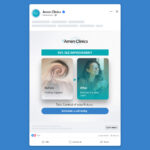Contents:
- Introduction to Content Marketing for Internet Marketers
- Why Trust is the Foundation of Successful Content Marketing
- Case Studies: Brands that Nailed Content Marketing
- The Power of Data in Content Marketing
- Engaging Your Audience: The Role of Rhetorical Questions
- The Art of the Call to Action: Making it Irresistible
- Personalizing Content for Better Engagement
- Conclusion: Your Next Steps in Content Marketing
Introduction to Content Marketing for Internet Marketers
Have you ever wondered why some brands seem to effortlessly captivate their audience, while others struggle to gain traction? The answer often lies in the power of content marketing. But not just any content – we’re talking about strategic, data-driven, and highly engaging content tailored for the digital age.
Ten years ago, content marketing was a buzzword, a shiny new toy in the marketer’s toolkit. Fast forward to today, and it’s no longer an option—it’s a necessity. Especially for internet marketers, who operate in the bustling digital realm, where attention spans are short, and competition is fierce.
Content marketing is more than just churning out blog posts or sharing random updates on social media. It’s about crafting compelling narratives, stories that resonate, and information that not only educates but also entertains. It’s about understanding your audience’s pain points, desires, and aspirations, and then delivering content that addresses those needs head-on.
Why is this so crucial for internet marketers, you ask? In the vast ocean of the internet, where countless brands are vying for attention, only those who truly connect with their audience stand out. And the bridge that facilitates this connection? Stellar content.
Now, if you’re an internet marketer, you might be thinking, “I get it, content is essential. But how do I harness its power?” That’s precisely what we’re here to explore. Through this guide, we’ll dive deep into the world of content marketing, uncovering strategies, insights, and actionable takeaways that can propel your brand to new heights.
Why Trust is the Foundation of Successful Content Marketing
Have you ever paused to consider why you’re loyal to certain brands? Why, amidst a sea of options, do you consistently gravitate towards specific names? The answer, more often than not, is trust.
Imagine this: Ten years ago, you stumbled upon a brand. Their promises were grand, their content engaging. But over time, their actions didn’t align with their words. Would you still be their patron today? Likely not. This underscores a fundamental truth in marketing: without trust, even the most captivating content falls flat.
Trust is the silent force behind every successful content marketing campaign. It’s the glue that binds a brand to its audience, the foundation upon which lasting relationships are built. In the digital realm, where face-to-face interactions are rare, content becomes the primary medium through which trust is cultivated.
But how does one infuse trust into content? It’s not about grand gestures or over-the-top promises. It’s about consistency, authenticity, and transparency.
- Consistency:
Just as a friend becomes reliable through consistent actions, brands must consistently deliver value through their content. Whether it’s a weekly blog post or a monthly newsletter, regularity breeds familiarity and trust.
- Authenticity:
In a world rife with misinformation, authenticity is a breath of fresh air. It’s about being genuine, showcasing both successes and failures and speaking in a voice that’s unmistakably yours.
- Transparency:
Today’s consumers are savvy. They appreciate brands that are open about their processes, challenges, and values. By being transparent in your content, you’re signaling that you have nothing to hide.
Now, you might wonder, “Is trust truly that influential?” To that, we say, look around. Brands that have mastered the art of trust-building are the ones leading the pack, enjoying unwavering loyalty and advocacy from their audience.
In the chapters that follow, we’ll delve deeper into the intricacies of content marketing. But as we navigate through strategies and insights, remember this: at the heart of every successful content piece lies trust. And as an internet marketer, it’s your most valuable asset.
Case Studies: Brands that Nailed Content Marketing
Ever wondered how some brands seem to effortlessly rise above the noise, capturing not just attention but also hearts and minds? It’s not just about having deep pockets or a vast team. It’s about strategy, creativity, and a deep understanding of one’s audience. Let’s dive into some real-world examples of brands that have mastered the art of content marketing.
1. Marvel Origins: Superheroes and Real Estate? A Match Made in Content Heaven
Remember the first time you read a Marvel comic? The thrill, the excitement, the connection to characters that seemed larger than life. Marvel, a brand synonymous with superheroes, took an unexpected turn when they collaborated with Movoto Real Estate.
- Strategy: The “Mapping Marvel Origins” campaign was a brilliant blend of pop culture and real estate. Using infographics, they connected iconic Marvel characters to their fictional hometowns, bridging the gap between comic book fantasy and real-world geography.
- Result: A whopping 9000 shares! By tapping into the nostalgia and love for Marvel characters, Movoto not only showcased their real estate prowess but also resonated with comic book fans. Features in major platforms like Yahoo, MTV, and Mashable were just the cherry on top.
2. Average Faces: A Stark Reminder of the Ravages of Drug Abuse
Have you ever seen a picture that you couldn’t shake off? The “Average Faces of Drug Abuse” campaign did just that. It wasn’t pretty, but it was powerful.
- Strategy: Using a mosaic of over 100 mugshots related to drug or alcohol arrests, they created composite images that starkly showcased the physical toll of substance abuse. Accompanied by hard-hitting facts and stats, the visuals were both haunting and educational.
- Result: The campaign garnered 9000 shares and was featured in 250 stories. More than just numbers, it positioned the brand as an authority in the drug treatment industry, driving both awareness and engagement.
3. Buzzstream: From SEO Tool to Thought Leader
Ever felt lost in the vast world of SEO? BuzzStream, a recognized name in the SEO space, aimed to be more than just another tool. They wanted to be the guiding light for marketers navigating the murky waters of SEO.
- Strategy: Original, research-driven content was the backbone of their campaign. By offering valuable insights and actionable tips, they aimed to position themselves as the go-to resource for all things SEO.
- Result: A staggering 66K shares and 320 featured stories later, BuzzStream wasn’t just an SEO tool; it was an industry authority. Their content not only drove traffic but also led to record-breaking sign-ups.
4. Salesforce: Data-Driven Insights for the Modern Marketer
In the age of information, how do you ensure your voice is heard? Salesforce, a leader in CRM, tackled this challenge head-on with content that was both informative and actionable.
- Strategy: Leveraging its vast repository of data, Salesforce produced in-depth reports offering insights into various industries. The goal? To be the trusted source of information for sales and marketing professionals.
- Result: A significant spike in LinkedIn engagement and a 20% increase in report downloads. Salesforce’s content not only informed but also empowered marketers to make data-driven decisions.
5. SAP: Tailored Content for a Global Audience
How do you cater to an audience spread across 190 countries? SAP, a global software giant, did it with content that was both universal and specific.
- Strategy: Industry-specific content was the cornerstone of their campaign. By addressing the unique challenges and opportunities of different sectors, they showcased their deep domain expertise.
- Result: From white papers and infographics to blogs and surveys, SAP’s content reached 19 different industries, solidifying its reputation as a global leader.
6. Walmart: The Retail Behemoth’s Content Play
Low prices and friendly service – sound familiar? Walmart, the world’s largest retailer, used content to reinforce its brand promise and connect with its vast customer base.
- Strategy: Staying true to its “everyday low prices” mantra, Walmart’s content revolved around its cost-leadership model, offering customers value at every touchpoint.
- Result: From direct sales to B2B services, Walmart’s content strategy played a pivotal role in its global expansion, including notable acquisitions like Flipkart in India.
7. Microsoft: Beyond Software, A Content Powerhouse
When you think Microsoft, what comes to mind? While software and operating systems might be the obvious answer, their content game is equally strong.
- Strategy: Using the STP (Segmentation, Targeting, Positioning) model, Microsoft crafted content that resonated with specific audience segments, from tech enthusiasts to corporate decision-makers.
- Result: A robust social media presence, with millions of followers across platforms, and content that not only informed but also inspired.
In the world of content marketing, these brands stand as shining beacons, exemplifying what’s possible with the right strategy, execution, and understanding of one’s audience. So, as you chart your content journey, let these stories inspire and guide you.
The Power of Data in Content Marketing
Ever found yourself swiping through an article, captivated, hanging onto every word? Chances are, behind that compelling narrative was a backbone of solid data. In the realm of content marketing, data isn’t just numbers on a spreadsheet; it’s the very essence that breathes life into stories, making them relatable, credible, and impactful.
Think back to a decade ago. The content was often driven by intuition, a gut feeling of what might resonate with the audience. Fast forward to today, and the landscape has transformed. We’re in the age of data-driven content marketing, where every decision, from the topic to the tone, is informed by insights gleaned from data.
- Data as the North Star: Guiding Content Strategy
Ever wondered how top brands seem to always be in sync with their audience? The secret lies in data. By analyzing user behavior, preferences, and feedback, brands can tailor their content to address specific pain points, desires, and aspirations. It’s not about shooting in the dark; it’s about precision targeting, ensuring that every piece of content hits the mark.
- Beyond Vanity Metrics: Delving Deeper
How many times have you seen brands flaunt their ‘million views’ or ‘thousands of shares’? While these numbers might look impressive at first glance, savvy marketers know that it’s the deeper metrics that truly matter. Engagement rates, dwell time, and conversion rates – these are the indicators of content that not only attracts but also resonates.
- Predictive Analysis: Anticipating the Future
What if you could predict the next big trend in your industry? With advanced data analytics, this isn’t just a pipe dream. Brands are now leveraging predictive analysis to forecast emerging trends, allowing them to stay ahead of the curve and position themselves as thought leaders.
- Personalization: Crafting Tailored Experiences
Remember the last time an article felt like it was speaking directly to you? That’s the magic of data-driven personalization. By segmenting their audience based on preferences, behaviors, and demographics, brands can craft content that feels tailor-made, enhancing engagement and loyalty.
- Validating Claims: Boosting Credibility
Ever been skeptical of a brand’s claim only to be convinced by a well-placed statistic? Data lends credibility to content. By backing up statements with solid facts and figures, brands can build trust, positioning themselves as reliable sources of information.
In the ever-evolving world of content marketing, data is the unsung hero, working behind the scenes to transform generic content into powerful narratives that drive action. It’s the bridge between brands and their audience, facilitating a deeper connection based on understanding and trust.
Engaging Your Audience: The Role of Rhetorical Questions
Have you ever read a piece of content and felt as if it was directly conversing with you? That moment when you pause, reflect, and engage deeper with the material? Often, the catalyst behind such engagement is a simple yet powerful tool: the rhetorical question.
Picture this: A sea of content, each piece vying for attention, each claiming to have the answers. Amidst this cacophony, how does one stand out? How does one not just capture attention but also provoke thought? Enter the realm of rhetorical questions.
- The Psychology Behind Rhetorical Questions
Why do rhetorical questions have such a profound impact? At their core, these questions tap into the human psyche’s innate curiosity. They challenge readers, prompting introspection and reflection. Instead of passively consuming content, readers become active participants, embarking on a journey of discovery.
- Setting the Tone: Framing the Narrative
Ever noticed how a well-placed rhetorical question can set the tone for an entire piece? Whether it’s sparking curiosity, evoking emotion, or challenging preconceived notions, rhetorical questions serve as pivotal anchors, guiding the narrative and shaping the reader’s journey.
- Building Bridges: Connecting with the Audience
What’s the secret to truly resonating with your audience? It’s about building bridges and fostering a sense of camaraderie and understanding. Rhetorical questions act as these bridges, narrowing the gap between the content creator and the consumer, and fostering a dialogue that feels personal and genuine.
- Driving Engagement: Beyond Passive Consumption
Why settle for mere views when you can ignite engagement? Rhetorical questions push readers beyond passive consumption. They encourage interaction, be it in the form of comments, shares, or deeper dives into the topic. It’s about transforming passive readers into active participants.
- The Art of Crafting the Perfect Rhetorical Question
How does one craft a rhetorical question that truly hits the mark? It’s a blend of understanding your audience, the context of your content, and the emotion you wish to evoke. It’s about asking questions that matter, questions that linger long after the content has been consumed.
In the vast landscape of content marketing, rhetorical questions stand as beacons, guiding readers toward deeper engagement and understanding. They’re not just tools; they’re invitations, beckoning readers to delve deeper, think harder, and engage more profoundly.
The Art of the Call to Action: Making it Irresistible
Ever found yourself impulsively clicking on a button, drawn by a compelling urge to know more? That magnetic pull, that irresistible allure, is the magic of a well-crafted Call to Action (CTA). In the vast digital landscape, where every brand vies for a slice of the audience’s attention, the CTA stands as the final frontier, the bridge between interest and action.
Picture this scenario: You’ve crafted a stellar piece of content. It’s engaging, informative, and resonates with your audience. But as they reach the end, they’re left wondering, “What next?” This is where the CTA comes into play, guiding them toward the next step, be it signing up, purchasing, or simply learning more.
- The Psychology of Persuasion
Why do some CTAs seem almost impossible to resist? Delving into the realms of psychology, effective CTAs tap into core human desires – the need for belonging, the allure of exclusivity, or the fear of missing out. By understanding these triggers, brands can craft CTAs that resonate on a deeper, more emotional level.
- Clarity is Key: Being Direct and Unambiguous
Ever been deterred by a vague, confusing CTA? In the world of digital marketing, clarity is paramount. Your audience should know exactly what to expect when they click on that button. Whether it’s “Download Now,” “Join Us,” or “Learn More,” the message should be clear and direct.
- Creating a Sense of Urgency: Now or Never
Why do limited-time offers or countdowns create such a buzz? It’s the sense of urgency. By introducing time constraints or highlighting scarcity, CTAs can drive immediate action, capitalizing on the audience’s fear of missing out.
- Visually Appealing: Designing CTAs that Stand Out
Have you ever been drawn to a CTA purely because of its design? Visual appeal plays a pivotal role in capturing attention. From vibrant colors and bold fonts to dynamic animations, the design elements of a CTA can significantly influence its effectiveness.
- Testing and Optimization: The Path to Perfection
How do you know if your CTA is truly effective? The answer lies in testing and optimization. By A/B testing different variations, analyzing click-through rates, and gathering feedback, brands can refine their CTAs, ensuring they resonate with their target audience.
In the intricate dance of content marketing, the Call to Action is the grand finale, the crescendo that drives home the message. It’s not just a button or a link; it’s an invitation, a beckoning towards a deeper engagement with the brand.
Personalizing Content for Better Engagement
Have you ever received a message or an email that felt like it was crafted just for you? That moment when a brand seems to understand your needs, desires, and aspirations to a tee? That’s the magic of personalized content. In a world inundated with generic messages, personalization stands as a beacon, drawing audiences closer, and fostering deeper connections.
Imagine this: Two emails land in your inbox. One starts with “Dear User,” while the other addresses you by your first name, referencing a recent purchase or interaction. Which one would you engage with? The answer is evident. Personalization transforms content from being just another message to a tailored experience.
- The Power of Segmentation: Catering to Unique Audiences
Why does segmentation matter in content? By dividing your audience based on demographics, behaviors, or preferences, you can craft content that resonates with specific groups. It’s about understanding that one size doesn’t fit all and tailoring your message to cater to diverse needs.
- Dynamic Content: Adapting in Real-Time
Ever been on a website that changes content based on your interactions? Dynamic content adapts in real time, offering recommendations, insights, or information based on user behavior. It’s not just personalization; it’s personalization on steroids.
- The Role of Data: Understanding Your Audience
How do brands know what you want? The answer lies in data. By analyzing user interactions, feedback, and preferences, brands can glean insights that drive their personalization strategies. It’s about listening to the audience and delivering content that aligns with their desires.
- Beyond Names: Deep Personalization
Is addressing someone by their first name the pinnacle of personalization? Far from it. Deep personalization delves into the nuances, crafting content based on past interactions, preferences, and even challenges faced by the user. It’s about creating a narrative that feels intimately personal.
- The Ethical Side: Balancing Personalization and Privacy
Where does one draw the line between personalization and intrusion? In the age of data breaches and privacy concerns, brands must tread carefully, ensuring that their personalization efforts don’t compromise user trust. It’s about being transparent, seeking consent, and respecting boundaries.
In the grand tapestry of content marketing, personalization is the thread that weaves deeper connections, fostering loyalty and engagement. It’s not just about addressing users by their names; it’s about understanding their journey, their challenges, and their aspirations.
Conclusion: Your Next Steps in Content Marketing
So, here we are, at the crossroads of content exploration and execution. After diving deep into the intricacies of content marketing, from the power of trust to the art of personalization, one question remains: What’s next?
Reflect for a moment on the digital landscape. A vast expanse, teeming with brands, messages, and narratives. In this bustling arena, how does one not just survive, but thrive? The answer, as we’ve discovered, lies in strategic, data-driven, and personalized content.
- Embrace Continuous Learning
Why settle for the status quo when the world of content is ever-evolving? Stay updated with the latest trends, tools, and techniques. Attend workshops, webinars, and conferences. Remember, in the realm of content marketing, learning is a never-ending journey.
- Listen to Your Audience
Ever wondered what your audience truly desires? The answer is simple: Ask them. Engage in conversations, conduct surveys, and seek feedback. In the symphony of content creation, your audience’s voice is the most crucial note.
- Experiment and Iterate
Afraid of making mistakes? Embrace them. The world of content marketing is all about experimentation. Test different formats, tones, and platforms. Analyze the results, learn from your missteps, and iterate. It’s all part of the growth journey.
- Collaborate and Co-create
Why tread the content path alone when collaboration can amplify your efforts? Partner with influencers, industry experts, and even your audience. Co-create content that resonates, engages, and drives action.
- Stay True to Your Brand
In the quest for virality, why lose your essence? While trends come and go, your brand’s voice, values, and vision remain constant. Ensure that every piece of content you create aligns with your brand’s ethos.
As we wrap up this exploration, remember this: Content marketing isn’t just about creating content; it’s about creating connections. It’s about weaving narratives that resonate, inform, and inspire. It’s about building bridges, fostering trust, and driving action.
Sources:
- How Content Marketing Builds Trust – Marketing Insider Group. Retrieved from https://marketinginsidergroup.com/content-marketing/content-marketing-builds-trust/
- How To Use Content Marketing To Build Brand Trust – Forbes. Retrieved from https://www.forbes.com/sites/forbesagencycouncil/2021/03/10/how-to-use-content-marketing-to-build-brand-trust/?sh=24acfc9625e3
- How do you use content marketing to build trust and authority with your online audience? – LinkedIn. Retrieved from https://www.linkedin.com/advice/0/how-do-you-use-content-marketing-build-trust-authority
- The Importance of Building Trust in Digital Marketing – LinkedIn. Retrieved from https://www.linkedin.com/pulse/importance-building-trust-digital-marketing-digi-venders?trk=public_post
- 4 Ways Content Can Fuel High-Trust Relationships – Influence & Co. Retrieved from https://blog.influenceandco.com/dont-underestimate-the-value-of-trust






